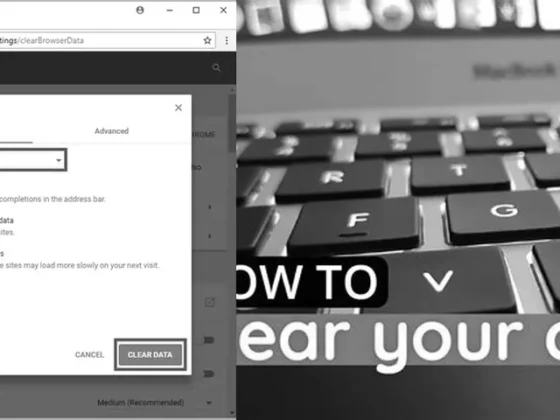Can You Connect A Chromebook To A Monitor Without Hdmi: Are you tired of squinting at your Chromebook’s small screen? Do you wish you could connect it to a larger monitor for a more immersive experience? Well, you’re in luck! In this blog post, we will explore the exciting world of Chromebook connectivity and show you how to connect your device to a monitor without HDMI. Whether you’re a student, a professional, or just someone who wants to maximize their productivity, this guide will provide you with all the information you need to make the most out of your Chromebook. So, grab your adapters and get ready to expand your screen real estate – it’s time to take your Chromebook to the next level!
Understanding Chromebook Ports and Compatibility
Before diving into the specifics of connecting a Chromebook to a monitor without HDMI, it’s essential to understand the array of ports that a Chromebook may possess. Chromebooks are versatile when it comes to display output options. They may include various ports such as HDMI, DisplayPort, DVI, VGA, or USB-C. Each of these ports serves as a gateway for transmitting video signals from your Chromebook to an external display.
HDMI and Its Alternatives
While HDMI is a common and convenient way to connect devices, it’s not the only method. If your Chromebook lacks an HDMI port, alternatives like DisplayPort, DVI, and VGA can also be used, depending on the ports available on both your Chromebook and the external monitor.
USB-C: The Multi-Function Port
In recent times, USB-C has emerged as a powerful and versatile port capable of data transfer, charging, and video output. Many modern Chromebooks come equipped with USB-C ports, which, with the right adapter, can be used to connect to monitors that have HDMI inputs.
Connecting Chromebook to a Monitor Using Adapters
If your Chromebook does not have an HDMI port, you’ll likely need to use an adapter to connect to a monitor’s HDMI input. A USB-C to HDMI adapter can bridge this gap by converting the signal from the Chromebook’s USB-C port to an HDMI output.
Finding the Right Adapter
When choosing a USB-C to HDMI adapter, ensure that it is compatible with your Chromebook. Look for adapters that support the correct version of HDMI compatible with your monitor for the best display quality.
Step-by-Step Connection Guide
- Acquire a compatible USB-C to HDMI adapter.
- Connect the adapter’s USB-C end to your Chromebook.
- Use an HDMI cable to connect the adapter’s HDMI end to your monitor.
- Switch to the correct input source on your external monitor.
- On your Chromebook, navigate to the display settings to enable display mirroring or extend your desktop, depending on your preference.
Enabling Display Mirroring in Chromebook Settings
Once the physical connections are in place, the next step is to configure your Chromebook to output the display correctly.
Accessing Display Settings
Go to your Chromebook settings, select ‘Device’, followed by ‘Displays’. Here, you can adjust the mirroring options.
Configuring the External Monitor
Within the display settings, you can choose to either mirror your Chromebook’s screen or extend your desktop to use the monitor as additional workspace. Adjust the resolution and orientation to match your preferred setup.
Troubleshooting Connection Issues
Occasionally, you might encounter issues when attempting to connect your Chromebook to an external monitor.
Replacing Faulty Cables
If your Chromebook is not working with an HDMI connection, consider testing the cable first. A faulty cable can often be the culprit behind connection problems.
Checking Input Source Settings
Make sure the input source on the monitor matches the cable or port being used. For instance, if you’re using a USB-C to HDMI adapter, the monitor should be set to the HDMI input source.
Understanding Chromebook’s HDMI Capabilities
It’s important to note that the HDMI port on Chromebooks is designed for output only. This means that you cannot use your Chromebook as an additional monitor by simply connecting another device’s HDMI cable to it.
Output Only Functionality
Chromebooks are not equipped to receive HDMI input, so they cannot display content from other devices via an HDMI connection. They are designed to send or “output” the video signal to another display.
Alternatives to HDMI Connections
Besides HDMI, other video interfaces like DisplayPort, DVI, and VGA can also be utilized for connecting your Chromebook to various displays.
Using DisplayPort and DVI
If your monitor supports DisplayPort or DVI, and your Chromebook has these ports, you can use a direct cable without the need for adapters. However, if you require an adapter (for example, USB-C to DisplayPort), the same principles of connection and configuration apply.
Connecting via VGA
VGA is less common on modern devices but still present on many monitors. If your monitor only has a VGA input, you’ll need a USB-C to VGA adapter to connect your Chromebook.
Maximizing Productivity with Multiple Monitors
For those who want to expand their digital workspace, connecting a Chromebook to an external monitor is a great way to increase productivity.
Extending Your Desktop
By extending your desktop rather than mirroring, you can work on multiple tasks simultaneously, keeping your research on one screen while writing on another, for example.
Ergonomic Benefits
Using an external monitor can also lead to a more comfortable and ergonomic workspace, allowing you to adjust the display height and distance for optimal comfort.
Final Thoughts on Chromebook Connectivity
Connecting a Chromebook to a monitor without an HDMI port is certainly possible and can be achieved with the right adapters and settings adjustments. By understanding the various ports and configurations, you can tailor your Chromebook’s display output to suit your needs, whether for work, entertainment, or multitasking.
FAQ & Related Questions about Connecting a Chromebook to a Monitor without HDMI
Q: Can I connect a Chromebook to a monitor without an HDMI port?
A: Yes, you can connect a Chromebook to a monitor without an HDMI port. Chromebooks have other ports such as DisplayPort, DVI, VGA, and USB-C that can be used to connect to external displays.
Q: What do I need if my Chromebook does not have an HDMI port?
A: If your Chromebook does not have an HDMI port, you will need a USB-C to HDMI adapter. This adapter allows you to connect your Chromebook to a monitor or TV with an HDMI port.
Q: How do I connect my HP Chromebook to a monitor without HDMI?
A: To connect your HP Chromebook to a monitor without HDMI, you will need a USB-C hub. This hub should have an HDMI port that you can use to connect your Chromebook to the monitor. Make sure to check the display mode settings on your Chromebook.
Q: Can a Chromebook receive HDMI input?
A: No, a Chromebook cannot receive HDMI input. The HDMI port on a Chromebook is output only, so connecting to it will not make your Chromebook act as a monitor.


